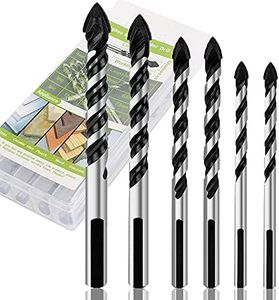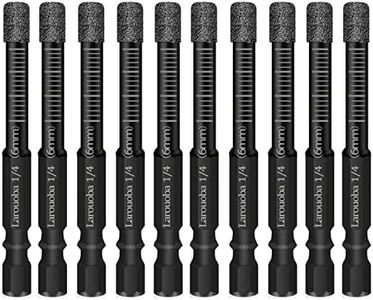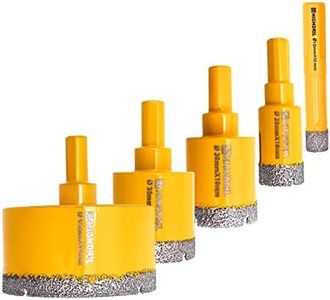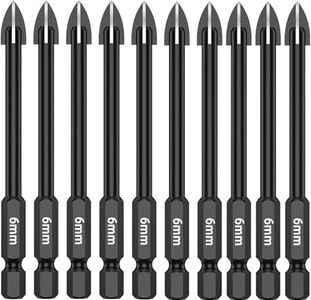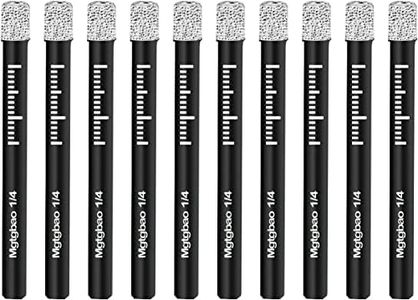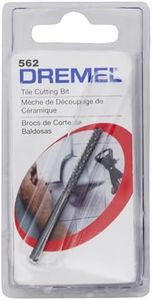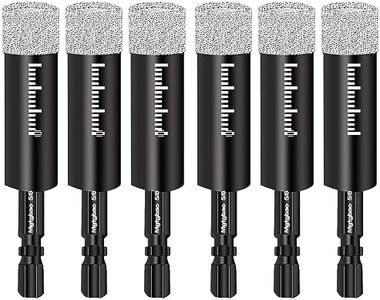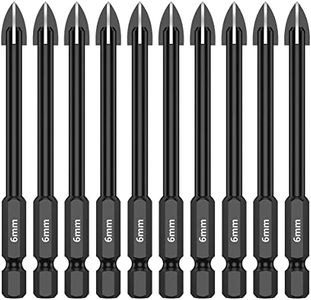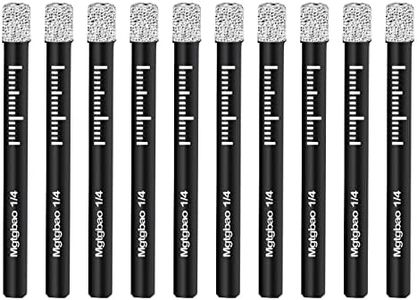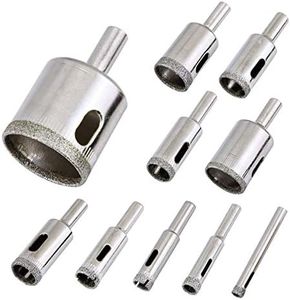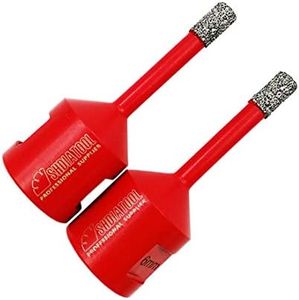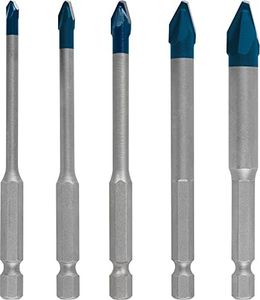We Use CookiesWe use cookies to enhance the security, performance,
functionality and for analytical and promotional activities. By continuing to browse this site you
are agreeing to our privacy policy
10 Best Tile Drill Bit
From leading brands and best sellers available on the web.Buying Guide for the Best Tile Drill Bit
Choosing the right tile drill bit is important if you want clean, precise holes in tiles without cracking them. The type of bit you select affects the ease, speed, and quality of your work. Your decision should be based on the kind of tiles you plan to drill into (ceramic, porcelain, glass, or stone), the hole size needed, and your power tool compatibility. Understanding the key features will help you match the right drill bit to your project, making tile drilling safe and efficient.MaterialThe material of the drill bit determines how well it can cut through different types of tile. Common materials include carbide-tipped, diamond-tipped, or tungsten carbide. Carbide-tipped bits are suitable for softer tiles like ceramic, while diamond-tipped bits are better for tougher materials like porcelain and stone. Choose the bit material that matches the tile you will be drilling – diamond-tipped bits are more versatile and longer-lasting but may cost more, while carbide is fine for simpler, occasional jobs.
Bit ShapeTile drill bits come in different shapes, mainly spear-pointed and hollow (core) bits. Spear-pointed bits are great for small holes and work well with ceramic and glass. Hollow (diamond core) bits are better for making larger, cleaner holes in hard tiles like porcelain or marble. If you only need small holes for something like wall plugs, spear point is enough. For bigger holes, like for pipes or fixtures, choose a hollow core bit.
Size (Diameter)The diameter of the drill bit determines the size of the hole you can make. Tile drill bits come in various sizes, from 4mm for small fixings up to 120mm or more for cutting large openings. Select the size based on what you’re installing—plugs, anchors, or pipes. Make sure the bit size matches the hardware you plan to use or the specifications of the item you’re fitting through the tile.
Cooling MethodSome tile drill bits require water (wet drilling) to keep them cool, which prevents overheating and extends their life, especially with diamond-tipped bits. Other bits are designed for dry use but may wear out faster or require stopping often to cool down. If you have many or deep holes to drill, or are working with hard materials like porcelain, choose a bit that allows for wet drilling and prepare to provide water during use.
Shank TypeThe shank is the part of the drill bit that fits into the drill. The most common shapes are round, hexagonal, and SDS. Round shanks fit standard drills, hex shanks reduce slipping and are suited for quick-change chucks, while SDS shanks are used with heavy-duty rotary drills. To pick the right one, check what type of chuck your drill has and choose a bit with a matching shank, ensuring a secure and stable fit when drilling.
Durability / LifespanDurability refers to how long the drill bit will last before becoming dull or breaking. Diamond-tipped bits generally have the longest life, especially when used with water. Carbide-tipped bits are more affordable but may dull quicker on hard tiles. If you have only a few straightforward holes to drill, durability may not be so crucial. If you’re planning multiple projects or working with tougher tiles, a more durable bit will save effort and maintain results.
